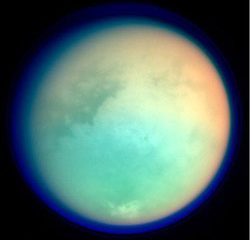Physics and Astronomy
This area deals with the fundamental laws and building blocks of nature and how they interact, the properties and the behavior of matter, and research into space and time and their structures.
innovations-report provides in-depth reports and articles on subjects such as astrophysics, laser technologies, nuclear, quantum, particle and solid-state physics, nanotechnologies, planetary research and findings (Mars, Venus) and developments related to the Hubble Telescope.

Sound Filters Light
Russian researchers have developed a small, smart and tolerant to vibrations spectrometer, which is equally reliable in the outer space and in oceanic depths. The development was performed with financial support from the Russian Foundation for Basic Research (RFBR) and the Foundation for Assistance to Small Innovative Enterprises (FASIE). The unique device is based on a completely new principle: the light goes through an acoustooptical filter in the device.
Specialists of the Sci

Titan, close and in false colour
This image shows Titan in ultraviolet and infrared wavelengths, taken by the NASA/ESA/ASI Cassini-Huygens spacecraft on 26 October 2004, during the close fly-by.
This image is constructed from four images acquired through different colour filters. Red and green colours represent infrared wavelengths and show areas where atmospheric methane absorbs light.
These colours reveal a brighter (redder) northern hemisphere. Blue represents ultraviolet wavelengths and shows the high

Researchers detect methane on Mars
A University of Michigan scientist is part of a European Space Agency team that has detected methane gas on Mars, the clearest indicator yet that there could be life there, said Sushil Atreya, professor and director of the Planetary Science Laboratory in the College of Engineering.
“Biologically produced methane is one of many possibilities,” Atreya said. “Methane is a potential biomarker, if a planet has methane we begin to think of the possibility of life on the planet. On Earth

The Virgo Cluster of Galaxies in the Making
An international team of astronomers [1] has succeeded in measuring with high precision the velocities of a large number of planetary nebulae [2] in the intergalactic space within the Virgo Cluster of galaxies. For this they used the highly efficient FLAMES spectrograph 3] on the ESO Very Large Telescope at the Paranal Observatory (Chile).
These planetary nebulae stars free floating in the otherwise seemingly empty space between the galaxies of large clusters can be used as “pro

Measuring Cosmic Distances with Stellar Heart Beats
VLTI Watches the Changing Size of Bright Southern Cepheids
Taking advantage of the very high spatial resolution provided by the Very Large Telescope Interferometer, a team of French and Swiss astronomers [1] has measured directly the change in angular diameter of four southern Cepheid variable stars over their pulsation cycle.
When combined with spectroscopic radial velocity measurements, this allowed the astronomers to measure very accurately the distances of these st

Stellar survivor from 1572 A.D. explosion supports supernova theory
An international team of astronomers is announcing today that they have identified the probable surviving companion star to a titanic supernova explosion witnessed in the year 1572 by the great Danish astronomer Tycho Brahe and other astronomers of that era.
A new discovery provides the first direct evidence supporting the long-held belief that Type Ia supernovae originate in binary star systems that contain a normal star and a burned-out white dwarf star. The normal star spills m